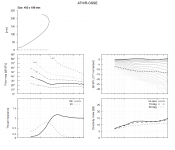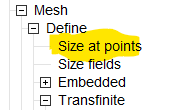Even if not immediately obvious from the profile itself, I think this would be already noticeably worse (someone may try): https://www.desmos.com/calculator/zgj3wc5thq
View attachment 1030632

Yes, I have a Matlab file that works perfectly to process Spectrum_ABEC.txt but it seems I have discovered a bug in Octave (they are looking into it) that makes the function fail in about 0.2% (on 12k iterations) of the time. Ath seems to load them fine though so I'll revert to Ath for the octave version.Is the aim to speed it up?
Dear Mabat.... I seek to design a waveguide for the Axi2050.... I think that a text book constant DI OS waveguide is where its at for me? You guys, here, did discuss the axi2050 for a period of time....I was wondering did you come to any conclusions as to which Profile might be best for the Axi?
I think that I could aim for a 18-20" diameter and be ok crossing to my 15" where ever the polar allowed. Is it that simple?
I think that I could aim for a 18-20" diameter and be ok crossing to my 15" where ever the polar allowed. Is it that simple?
I think this is still an open question. A text book OS will stop functioning around 8 kHz for a 2" throat. There are several ways how to deal with it - I would put my biggest hopes into the spherical wave plug ("ESP") but that's still very new and so mostly theoretical.
Now I'm slowly working on the following (various edge rounding and off-center waveguide placement will be posible).
The great thing about Gmsh is that you can easily vary the mesh density continuously -


The great thing about Gmsh is that you can easily vary the mesh density continuously -
Last edited:
Which command are you using to do the variation in the right hand graph?The great thing about Gmsh is that you can easily vary the mesh density continuously -
That's not a command, it's a part of point definition, at least in a Gmsh script. Each point influences the mesh density around it. So each of the corners can simply have a different value:
Point(id) = { x, y, z, mesh_density };
Point(id) = { x, y, z, mesh_density };
OK, I've never used Gmsh that way. I use the GUI app just for viewing the MSH files.
Last edited:
With a slightly refined mesh -
(It's beaming because of a 70mm throat - a residue from another project)


(It's beaming because of a 70mm throat - a residue from another project)
how low do you want the AXI2050 to go? you may want to consider a diffraction slot if <500Hz to increase low frequency loading. Both the 'big red horn' and ME464 use one to achieve 'compact' wide band performance.Dear Mabat.... I seek to design a waveguide for the Axi2050.... I think that a text book constant DI OS waveguide is where its at for me? You guys, here, did discuss the axi2050 for a period of time....I was wondering did you come to any conclusions as to which Profile might be best for the Axi?
I think that I could aim for a 18-20" diameter and be ok crossing to my 15" where ever the polar allowed. Is it that simple?
Nice sims. Wish that I had that kind of capability back-in-the-day ...
Would the sound reflecting from an arbitrary shaped surface, but as single one directional sines (polar response and with a reasonable depth/lambda?) be possible in the apps that you use? I had that question in my mind from a TV show with a contoured wall. Wondered about it acoustically.
I don't understand what you mean by single one directional sines. Otherwise I think it would be possible to analyze a reflection from anything that can be modelled as a rigid boundary of whatever shape.
- Home
- Loudspeakers
- Multi-Way
- Acoustic Horn Design – The Easy Way (Ath4)
